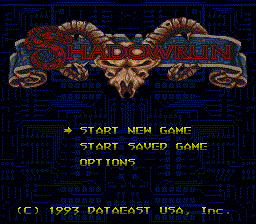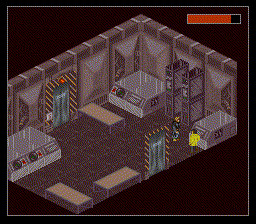
Friendship,” wrote C. S. Lewis in a December 1935 letter, “is the greatest of worldly goods. Certainly to me it is the chief happiness of life. If I had to give a piece of advice to a young man about a place to live, I think I should say, ‘sacrifice almost everything to live where you can be near your friends.’”
Clive Staples Lewis (1898-1963) was just the sort of person I would give an arm to have as a friend across the street. I can only imagine the thrill of listening to him for hours on end. This distinguished scholar and thinker was, of course, a prolific author of works in Christian apologetics and of the seven-part children’s fantasy,
The Chronicles of Narnia (which have sold more than 100 million copies and have been adapted into three major motion pictures).
While teaching literature first at Oxford and then at Cambridge, he cranked out more than a score of books, from the dense but highly regarded
Mere Christianity to the entertaining
The Screwtape Letters, plus hundreds of speeches, essays, letters, and radio addresses. Some regard him as the greatest lay theologian of the 20th Century. His influence, substantial while he was alive, may be even greater in the world today. Visit the C. S. Lewis
website and you’ll see just how copious and wide-ranging this amazing Irishman’s interests were.
The Politics of C.S. Lewis
Stacked against his literary and theological offerings, Lewis’s commentary on political and economic matters is comparatively slim—mostly a few paragraphs scattered here and there, not in a single volume. Lewis scholars have examined those snippets to discern where he might be appropriately placed on the spectrum. Was he a socialist, a classical liberal, an anarchist, a minarchist, a theocrat, or something else?
Personally, I believe Lewis might be perfectly happy to be labeled a Christian libertarian. He embraced minimal government because he had no illusions about the essentially corrupt nature of man and the inevitable magnification of corruption when it’s mixed with political power. He knew that virtuous character was indispensable to a happy life, personal fulfillment, and progress for society at large—and that it must come not by the commands of political elites but from the growth and consciences of each individual, one at a time. He celebrated civil society and peaceful cooperation and detested the presumptuous arrogance of officialdom.
In these very pages, other writers have made the case that Lewis was a lover of liberty. In a 2012 article titled "
C. S. Lewis: Free Market Advocate," Harold B. Jones Jr. argued that it was Lewis’s belief in “the rules of logic” and “premises that are fixed realities” that produced his embrace of markets and free exchange. I think Lewis’s literal interpretation of Jesus’s words led him to the same perspective I explained in my essay, "
Rendering Unto Caesar: Was Jesus a Socialist?"
Calvin College’s David V. Urban answered the question “
Was C. S. Lewis a Libertarian?” with a resounding Yes! And thirty-five years earlier, in “
C. S. Lewis on Compelling People to Do Good,” Clarence Carson dissected Lewis’s statements and arrived at a similar conclusion. More recently, Marco den Ouden brilliantly drew out Lewis’s sobering insights into the tyrannical potential of pure democracy in “
Why the Devil Loves Democracy.” All these essays are well worth your time even if your interest in Lewis is minimal.
It’s the primary source of Lewis’s own words, of course, that should clarify where his political and economic sympathies were. Allow me to present the following selections for you to consider.
"Willing Slaves of the Welfare State"
Lewis’s 1958 essay, “Willing Slaves of the Welfare State” (published that year in
The Observer and then later revised and included in his excellent 1970 anthology,
God in the Dock) is a goldmine of insights about government and its proper relationship to the individual. You can read the whole essay
here. One of my favorite passages is this:
To live his life in his own way, to call his house his castle, to enjoy the fruits of his own labor, to educate his children as his conscience directs, to save for their prosperity after his death—these are wishes deeply ingrained in civilized man. Their realization is almost as necessary to our virtues as to our happiness. From their total frustration disastrous results both moral and psychological might follow.
While advocates for the interventionist welfare state argue that government programs produce happiness and security, Lewis suggests they are seriously mistaken. There is a far better way to achieve those ends, namely, freedom:
I believe a man is happier, and happy in a richer way, if he has "the freeborn mind." But I doubt whether he can have this without economic independence, which the new society is abolishing. For economic independence allows an education not controlled by Government; and in adult life it is the man who needs, and asks, nothing of Government who can criticize its acts and snap his fingers at its ideology. Read Montaigne; that’s the voice of a man with his legs under his own table, eating the mutton and turnips raised on his own land. Who will talk like that when the State is everyone’s schoolmaster and employer?
Elsewhere in the essay, Lewis is unequivocal in his disdain for the pretensions of government, as much for its overblown claims of “rule by experts” in the modern day as for its medieval insistence on rule by “divine right.” In every age, he says, “the men who want us under their thumb” will advance the particular myths and prejudices of the day so they can “cash in” on hopes and fears.
That, he says, opens the door wide to tyranny in one form or another. Such men are no more than self-exalting, self-aggrandizing mortals. While they may proclaim to be “of the people and for the people,” they inevitably establish self-serving oligarchies at the people’s expense. The following three paragraphs from “Willing Slaves of the Welfare State” (appearing at different points in the essay) express profound skepticism toward the “planners of society” among us:
"I believe in God, but I detest theocracy. For every Government consists of mere men and is, strictly viewed, a makeshift; if it adds to its commands ‘Thus saith the Lord’, it lies, and lies dangerously."
"The question about progress has become the question whether we can discover any way of submitting to the worldwide paternalism of a technocracy without losing all personal privacy and independence. Is there any possibility of getting the super Welfare State’s honey and avoiding the sting?"
"The modern state exists not to protect our rights but to do us good or make us good—anyway, to do something to us or to make us something. Hence the new name 'leaders' for those who were once 'rulers.' We are less their subjects than their wards, pupils, or domestic animals. There is nothing left of which we can say to them, 'Mind your own business.' Our whole lives are their business."
The notion that the welfare state will take good care of us is, to Lewis, delusional. Doing so is to sell short one’s own capabilities and those of voluntary, social networks and organizations. It also ensnares one in a fool’s errand that cannot end well:
What assurance have we that our masters will or can keep the promise which induced us to sell ourselves? Let us not be deceived by phrases about "Man taking charge of his own destiny." All that can really happen is that some men will take charge of the destiny of the others. They will be simply men; none perfect; some greedy, cruel and dishonest. The more completely we are planned the more powerful they will be. Have we discovered some new reason why, this time, power should not corrupt as it has done before?
"Equality"
Lewis believed that men and women should be equal before the rule of law. He disdained arbitrariness, caprice, racism, or classism in the law’s application. Consistent with those principles, he believed just as firmly that the law should not aim to make people equal in other ways, such as in material wealth. That could only be done through ugly force.
In a 1943 essay entitled “Equality,” he warned against applying economic equalness as a “medicine” for society’s ills. When we do that, he said, “we begin to breed that stunted and envious sort of mind which hates all superiority. That mind is the special disease of democracy, as cruelty and servility are the special diseases of privileged societies. It will kill us all if it grows unchecked.”
Though he found the egalitarian impulses of democracy offensive, he wasn’t averse to using the term “democrat” to describe his own feelings about government. It’s important to note that he used the term in its broadest sense, namely, to mean popular participation in decisions about who served in government and what they could justifiably do. At the end of the day, he readily acknowledged the danger of a pure democracy combining with rotten character to ultimately produce its precise opposite, dictatorship. In
Of Other Worlds: Essays and Stories (1966), he wrote:
Being a democrat, I am opposed to all very drastic and sudden changes of society (in whatever direction) because they never in fact take place except by a particular technique. That technique involves the seizure of power by a small, highly disciplined group of people; the terror and the secret police follow, it would seem, automatically. I do not think any group good enough to have such power. They are men of like passions with ourselves. The secrecy and discipline of their organization will have already inflamed in them that passion for the inner ring which I think at least as corrupting as avarice; and their high ideological pretensions will have lent all their passions the dangerous prestige of the Cause. Hence, in whatever direction the change is made, it is for me damned by its modus operandi. The worst of all public dangers is the committee of public safety.
The Screwtape Letters
The Screwtape Letters (1942) remains one of Lewis’s most popular satirical pieces. It was written as a series of missives from a senior demon, named Screwtape, to his nephew Wormwood, who carries the official title of Junior Tempter. Screwtape is training Wormwood in how to corrupt mankind, to turn society into a Hell on Earth. It’s very revealing of Lewis’s political thinking that the senior demon instructs his pupil to “equalize” and “democratize” to achieve their nefarious objectives:
What I want to fix your attention on is the vast, overall movement toward the discrediting, and finally elimination, of every kind of human excellence—moral, cultural, social, or intellectual. And is it not pretty to notice how Democracy is now doing for us the work that once was done by the ancient Dictatorships, and by the same methods? … Allow no pre-eminence among your subjects. Let no man live who is wiser, or better, or more famous, or even handsomer than the mass. Cut them down to a level; all slaves, all ciphers, all nobodies. All equals. Thus Tyrants could practice, in a sense, "democracy." But now "democracy" can do the same work without any other tyranny than her own.
If Lewis were a statist of any persuasion, I don’t see how he could write any of the above. And if he were a statist, he would likely glorify the ambitions of central planners, which he never did. He was just not impressed by the pomposity of politicians. In his 1960 essay titled “
The World’s Last Night,” he wrote,
The higher the pretensions of our rulers are, the more meddlesome and impertinent their rule is likely to be and the more the thing in whose name they rule will be defiled. . . . Let our masters . . . leave us some region where the spontaneous, the unmarketable, the utterly private, can still exist.
"A Tyranny Sincerely Exercised"
If I had to choose a favorite among Lewis’s pithy put-downs of big government, it would be this clip from his 1949 essay “
The Humanitarian Theory of Punishment,” which also appeared later in his anthology,
God in the Dock:
Of all tyrannies a tyranny sincerely exercised for the good of its victims may be the most oppressive. It may be better to live under robber barons than under omnipotent moral busybodies. The robber baron's cruelty may sometimes sleep, his cupidity may at some point be satiated; but those who torment us for our own good will torment us without end for they do so with the approval of their own conscience. They may be more likely to go to Heaven yet at the same time likelier to make a Hell of earth. This very kindness stings with intolerable insult. To be "cured" against one's will and cured of states which we may not regard as disease is to be put on a level of those who have not yet reached the age of reason or those who never will; to be classed with infants, imbeciles, and domestic animals.
Lewis’s worldview was internally consistent. He couldn’t bring himself to look upon government as God, a substitute for God, or a reasonable facsimile of God. Government was composed of imperfect mortals, period. That means it contains all the flaws and foibles of mortals so a free people must confine it, restrain it, and keep a wary eye on it.
He was humble enough to admit what so many other mortals won’t, namely, that not even his own good intentions could justify lording it over others. To him, good intentions plus political power equals tyranny all too often. He believed that bad consequences flow directly from bad ideas and bad behavior. In
The Abolition of Man, he says:
In a sort of ghastly simplicity we remove the organ and demand the function. We make men without chests and expect of them virtue and enterprise. We laugh at honor and are shocked to find traitors in our midst. We castrate and bid the geldings be fruitful.
Finally, I love his scathing criticisms of the education establishment of his day—dominated as it was (and is even more so today) by the centralizers, the faddists, and the practitioners of pedagogical malpractice who are empowered by virtue of government’s involvement. If education is to be saved, I think he would see that salvation coming from private initiative, not from the costly, mind-numbing conformity of bureaucrats in the Department of Education:
Hitherto the plans of the educationalists have achieved very little of what they attempted, and indeed we may well thank the beneficent obstinacy of real mothers, real nurses, and (above all) real children for preserving the human race in such sanity as it still possesses.
If the world is no smarter today than it was when C. S. Lewis died in 1963, we certainly can’t blame him. He gifted us wisdom by the bushels—wisdom we ignore or dismiss at our peril.
Source: C.S. Lewis Saw Government as a Poor Substitute for God - Foundation for Economic Education




 Marineland, Florida - Processed in May 1964
Marineland, Florida - Processed in May 1964 Processed in March 1965
Processed in March 1965 Processed in March 1965
Processed in March 1965






 Photographed in 1962
Photographed in 1962 Processed in March 1960
Processed in March 1960 Processed in August 1961
Processed in August 1961













 1962
1962
















